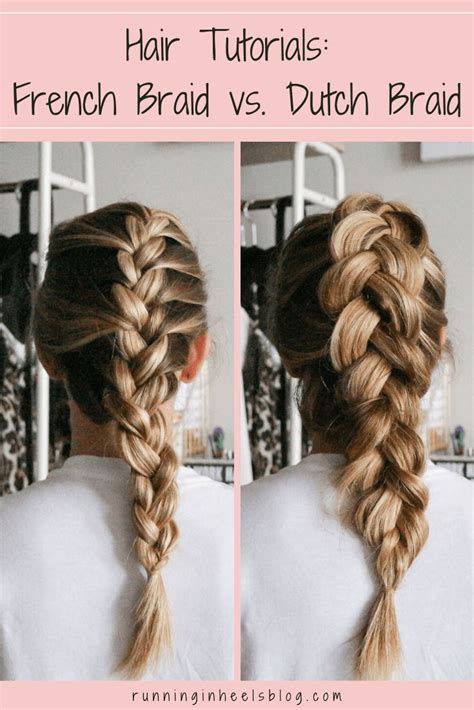Introduction:

Braiding, a timeless hair-styling technique, has captivated people worldwide for centuries. Among the most popular braids are the French and Dutch varieties, each with its unique charm and allure. In this in-depth analysis, we delve into the intricate differences between French and Dutch braids, helping you choose the perfect style for any occasion.
French Braid vs. Dutch Braid: A Comparative Analysis
Structure and Appearance:
- French Braid: A French braid involves weaving three strands of hair together, starting at the crown and gradually adding hair from the sides. The resulting braid is raised slightly above the scalp, creating a delicate and elegant effect.
- Dutch Braid: Similar to the French braid, the Dutch braid also weaves three strands of hair. However, the key difference lies in the direction of the strands. In a Dutch braid, the strands are crossed underneath each other, resulting in a braid that sits on the scalp, exuding a more intricate and eye-catching look.
Complexity and Skill Level:
- French Braid: French braids require moderate skill and some practice to master. Beginners may find it slightly easier to learn compared to Dutch braids.
- Dutch Braid: Dutch braids require higher skill and dexterity. They can be more challenging to learn for those new to braiding.
Applications and Versatility:
- French Braid: French braids offer versatility and can be worn in a variety of styles, including updos, side braids, and half-up hairstyles. They are perfect for formal events, casual outings, or even as a gym-ready look.
- Dutch Braid: Dutch braids exude a more athletic and edgy vibe. They are often incorporated into intricate hairstyles, such as crowns, buns, and ponytails.
Benefits of French and Dutch Braids:
French Braids:
- Versatile styling options: Can be worn in various ways
- Timeless and elegant: Suitable for formal and informal occasions
- Comfortable to wear: Does not pull on hair or cause discomfort
Dutch Braids:
- Creates an intricate and eye-catching effect: Ideal for special events or bold statements
- Adds volume and depth: Enhances hair thickness and fullness
- Provides a secure hold: Suitable for active lifestyles and workouts
Tips and Tricks for Perfect French and Dutch Braids:
- Section your hair: Divide your hair into three equal parts for both French and Dutch braids.
- Start the braid tightly: Hold the strands firmly at the beginning to create a secure foundation.
- Keep your tension even: Maintain consistent tension throughout the braiding process to ensure a neat finish.
- Incorporate hairspray or gel: Use styling products to keep flyaways in place and add shine to your braid.
- Practice makes perfect: The key to mastering French and Dutch braids is regular practice. Start with smaller sections, gradually increasing the size as you become more confident.
Key Differences Summarized:
| Feature | French Braid | Dutch Braid |
|---|---|---|
| Appearance | Raised above scalp | Sits on scalp |
| Strand Direction | Crossed over | Crossed underneath |
| Skill Level | Moderate | High |
| Versatility | Wide range of styles | Intricate and eye-catching |
| Applications | Formal and casual | Special events and active lifestyles |
Conclusion:
French and Dutch braids are both exceptional braiding techniques that can elevate your hair game. While the French braid offers timeless elegance and versatility, the Dutch braid exudes a more athletic and intricate charm. Ultimately, the choice between the two depends on your personal style, occasion, and skill level. With practice and patience, you can master both techniques and create stunning hairstyles that turn heads wherever you go.
